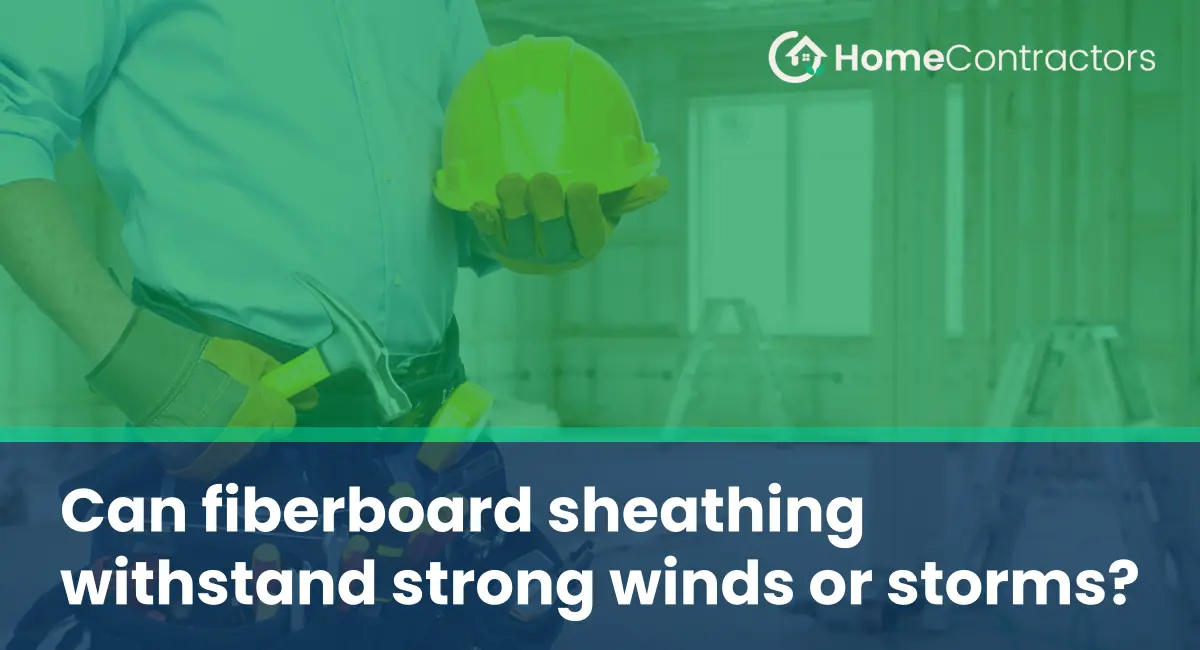Fiberboard sheathing is commonly used as an exterior insulation and finishing system in construction projects. As a durable, lightweight, and cost-effective option, it has gained popularity in the building industry. However, when it comes to its ability to withstand strong winds or storms, there may be some concerns. In this article, we will explore the capabilities of fiberboard sheathing in the face of adverse weather conditions.
Understanding Fiberboard Sheathing:
Fiberboard sheathing is typically made from compressed wood fibers and is available in various thicknesses. It is commonly utilized as a water-resistant barrier and serves as a backing for exterior finishes such as stucco, brick veneer, or siding. While it offers several advantages, it is essential to evaluate its capability to withstand powerful winds and storms.
Factors to Consider:
Several factors contribute to the strength and durability of fiberboard sheathing when faced with high winds or storms.
1. Wind Uplift Resistance:
Wind uplift is a critical consideration for any building material, especially when exposed to strong winds. Fiberboard sheathing, when properly installed and integrated into the overall structure, can provide adequate resistance against wind uplift. However, the specific resistance capabilities may vary depending on the product’s thickness, density, and fastening system.
2. Impact Resistance:
During storms, flying debris can cause significant damage to buildings. Fiberboard sheathing, being a solid material, generally offers adequate impact resistance. However, the level of protection may depend on the thickness and quality of the sheathing, as well as the potential force and size of the debris.
3. Moisture Resistance:
Moisture infiltration is a common concern during storms, which can lead to rot, mold, and structural damage. Fiberboard sheathing, known for its water-resistant properties, helps alleviate some of these concerns. It acts as a barrier, preventing water intrusion and protecting the underlying structure. However, it is crucial to ensure proper installation, including appropriate flashing and sealing, to maximize moisture resistance.
Adherence to Building Codes:
To ensure the structural integrity of buildings, it is essential to adhere to local building codes. These codes specify the minimum requirements for materials, including fiberboard sheathing, to withstand given wind speeds and storm conditions. Compliance with these codes can help ascertain the ability of fiberboard sheathing to withstand strong winds or storms.
Using Fiberboard Sheathing in High-Wind Zones:
In areas prone to hurricanes or high winds, additional precautions may be necessary when using fiberboard sheathing. Building designs might include additional support elements, such as hurricane ties or hold-downs, to enhance the overall strength of the structure. Moreover, the installation process becomes even more critical, with a focus on proper sealing, flashing, and attachment methods.
Fiberboard sheathing is a versatile material widely used in construction projects. While it offers several benefits, its ability to withstand strong winds or storms should be evaluated carefully. Factors such as wind uplift resistance, impact resistance, and moisture resistance contribute to its overall durability. Adhering to local building codes and considering additional support measures in high-wind zones further enhance the performance of fiberboard sheathing. By understanding these factors and taking necessary precautions, construction professionals can ensure that fiberboard sheathing is a suitable choice for resisting strong winds and storms in their building projects.
